Research and Social Implementation of Ecosystem-based Disaster Risk Reduction as Climate Change Adaptation in Shrinking Societies
- FS①
- PR
- FR①
- FR②
- FR③
- FR④
- FR⑤
2021
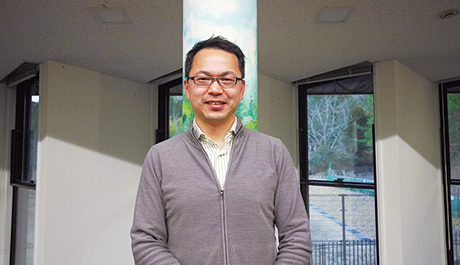 Project Leader
Project LeaderYOSHIDA Takehito
RIHN/The University of TokyoTakehito Yoshida is an ecologist and limnologist who studies diversity and complexity of organisms and ecosystems from the viewpoints of adaptation and system dynamics, and explores human-nature interactions and sustainability in local communities in Japan. Trained in Kyoto University (PhD) and Cornell University (postdoc), he was a member of the faculty at the University of Tokyo at Komaba before assuming joint appointments at RIHN and the University of Tokyo.
>> Annual Report>> Project's Face Book
| Sub Leader | |
| AIBA Masahiro | Specially Appointed Assistant Professor |
| Researchers at RIHN | |
| HUANG, Wanhui | Researcher |
| NAKAI Minami | Research Associate |
| SENDA Masako | Research Associate |
| SHIMAUCHI Risa | Research Associate |
| Main Members | |
| AKIYAMA Yuki | Tokyo City University |
| FUKAMACHI Katsue | Kyoto University |
| FURUTA Naoya | Taisho University / IUCN |
| HASHIMOTO Shizuka | The University of Tokyo |
| ICHINOSE Tomohiro | Keio University |
| MIYOSHI Iwao | Kyoto Prefectural University |
| NISHIDA Takaaki | Kyoto Sangyo University |
| NISHIHIRO Jun | National Institute for Environmental Studies |
| SAITO Osamu | The Institute for Global Environmental Strategies |
| SHIBASAKI Ryosuke | The University of Tokyo |
| SHOUJI Tarou | Pacific Consultants Co., Ltd. |
| TAKI Kentaro | The University of Shiga Prefecture |
| UEHARA Misato | Shinshu University |
| URASHIMA Hiroko | MS&AD Insurance Group Holdings, Inc. |
Outline of the project
Globally, the rate of natural disaster occurrence has been increasing, partly due to contemporary climate change, and adaptation to natural disaster risks is increasingly important to the sustainability of human societies. At the same time, many societies are experiencing shrinking populations. Ecosystem-based Disaster Risk Reduction (Eco-DRR) takes advantage of the multi-functionality of ecosystems and biodiversity, including their capacity to mitigate natural disasters while providing multiple ecosystem services, and population decline provides ample opportunity for implementing Eco-DRR. Our project will develop practical solutions for implementation of Eco-DRR by visualizing natural disaster risks, evaluating multifunctionality of Eco-DRR solutions, conducting transdisciplinary scenario analysis, examining traditional and local knowledge of disaster risk reduction, and collaborating with the insurance industry and other sectors.
Background and goals
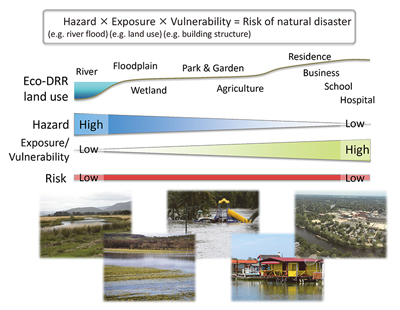
Figure 1 Ecosystem-based disaster risk reduction not only lowers disaster risks but also enhances benefits of ecosystem services by reducing the exposure of human activities in high-hazard locations and supporting human activities in low-hazard locations.
Climate change impacts natural and human systems, and these impacts are projected to intensify in the future. Our project focuses on reducing risk and developing management strategies related to natural disasters. The risk of natural disasters results from the interaction between a climate-related hazard, and the exposure and vulnerability of human activities (Fig. 1), so that adaptation to natural disaster risk can be realized by reducing exposure (e.g. by improving land use) and vulnerability to hazards.
Hard-engineering natural disaster countermeasures have target safety levels below which natural disasters can be prevented. Although these countermeasures are effective if the hazard level of natural disaster is below the target safety level, societies increasingly face situations in which hazards exceed safety levels, resulting in devastating natural disasters. Eco-DRR approaches focus on lowering the exposure of human activities to natural hazards, so reducing, if not preventing, associated losses and damages. Eco-DRR approaches, meanwhile, take advantage of the multi-functionality of ecosystems, complementing conventional approaches to natural disaster management, even though the effectiveness and multi-functionality of Eco- DRR is not yet clearly and quantitatively understood.
The population of Japan increased substantially over the last century, increasing the risk of and public exposure to natural disasters. Recently, however, the population is aging and shrinking, leading to the abandonment of farmlands, houses and decreases in other intensive land uses, a challenging circumstance that nevertheless provides an opportunity for improving land use. Evaluating past natural disaster risks in both expanding and shrinking population contexts therefore provides valuable information of adaptation strategies considered in Japan as well as in other countries.
Given this background, the ECO-DRR project sets two main goals. First, it develops methodologies to evaluate Eco-DRR multi-functionality and assess Eco-DRR by comparing multi-functionality in the past, present and future. Secondly, the project supports Eco-DRR implementation through transdisciplinary collaborations with local communities, governments, insurance industry and other stakeholders.
Research objectives
Three research components contribute to achieve the above two goals.
- (1)Visualizing risks of natural disasters in present and past
- (2) Evaluating and modeling multi-functionality of Eco-DRR
- (3) Transdisciplinary approaches for implementing Eco-DRR in society
Exposure and vulnerability to different natural disasters is analyzed, and societal risk is evaluated and visualized with risk maps of the present and past. Modeling risk for different exposure scenarios will contribute to future Eco-DRR assessments and plans.
Provisioning, regulating, and cultural ecosystem services will be evaluated, and their spatial distribution will be modeled in relation to population and land use. The model will be used to evaluate the ecosystem services associated with different land use scenarios.
Together with local stakeholders, transdisciplinary platforms will be formed at each of the local research sites by taking advantage of existing platforms. Transdisciplinary platforms will deepen mutual understanding, promote discussion of future options, and build consensus regarding the use of Eco-DRR. Multifunctionality of Eco-DRR at each local site will be evaluated and research outcomes will be shared with local stakeholders using our transdisciplinary platform. In addition, traditional and local knowledge of Eco-DRR will be inventoried and evaluated for multifunctionality so that the benefits of traditional and local knowledge can be shared with the general public.
In collaboration with insurance industry, a research forum will be formed to discuss the possibility and feasibility of insurance industry contributions to economic incentives of Eco-DRR. Various laws and institutions in national and local governments related to disaster risk reduction and land use will be assessed in the research forum as well.
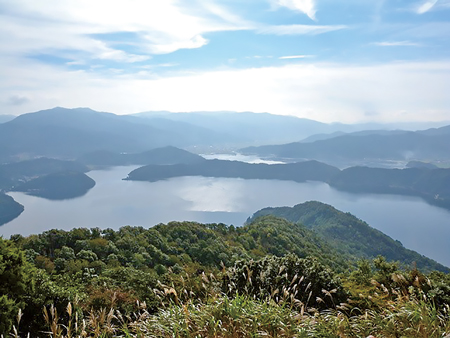
Photo 1 Mikatagoko area in Fukui Prefecture, one of the research sites.
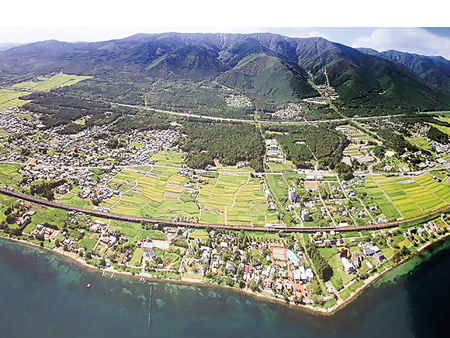
Photo 2 Hira mountains and their base area in Shiga Prefecture, one of the research sites. Photo courtesy of MATSUI Kimiaki.
Recent results
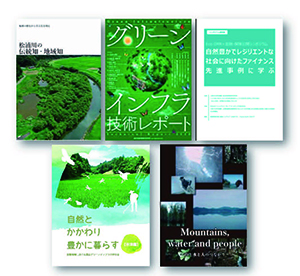
Figure 2 Booklets published in 2020 summarize the results of our research and actions. E-books and PDFs are available for free from the RIHN website.
As the project turns the halfway point, we have been working on disseminating the results of the research and actions we have conducted in collaboration with diverse stakeholders. Traditional and local knowledge in the Matsuura River in Saga Prefecture was compiled as a booklet. We have compiled a technical report on Eco-DRR and green infrastructure in collaboration with practitioners from six consulting companies. In addition, a booklet introducing advanced overseas examples of fi nance and insurance for implementing Eco-DRR, a guide to the management of the Yatsu landscape, which exists in many places in the Lake Inba watershed (Chiba Prefecture) and has a variety of functions, and a film and booklet introducing the relationship between nature and people at the foot of Hira Mountains (Shiga Prefecture) were published. All of these materials are available free of charge through the RIHN website.
▲PAGE TOP